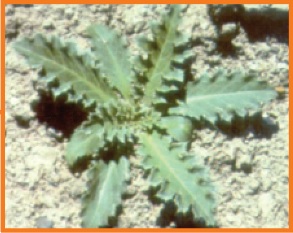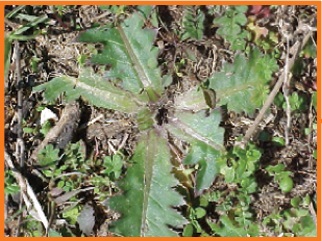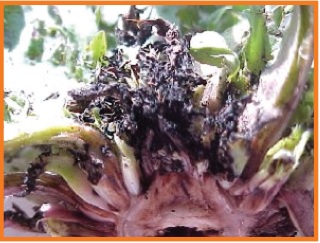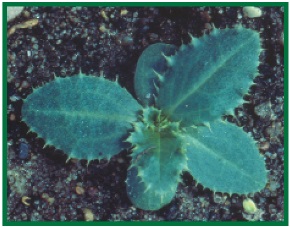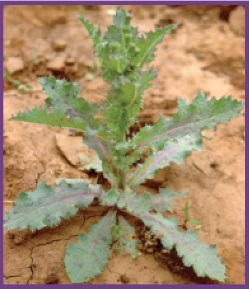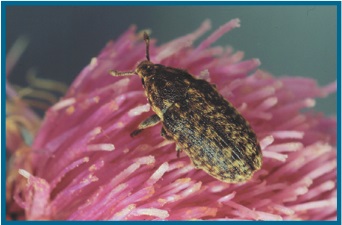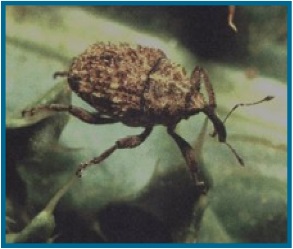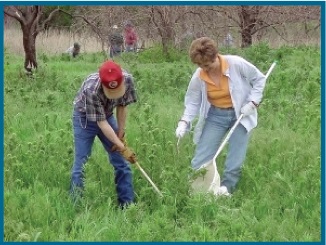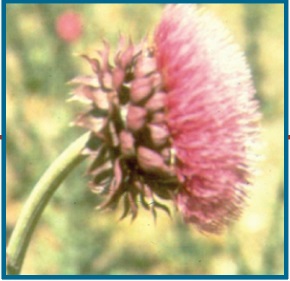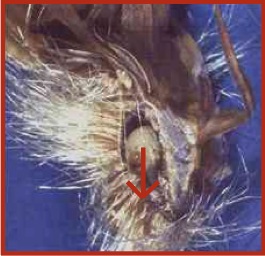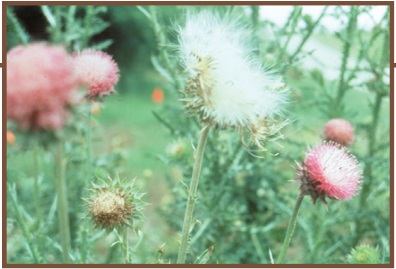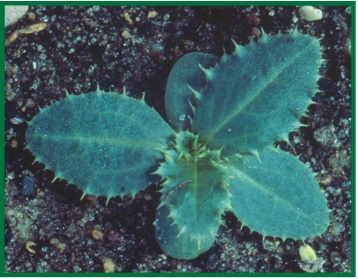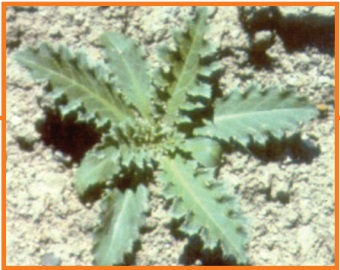Musk Thistle Management Action List
Calendar of thistle and Weevil Activity
January
Musk thistle head weevil overwinter in rosette
Rosette weevil larval damage can be detected in the thistle rosettes.
February
Biennial musk thistle begin to emerge. These plants will not begin their reproductive (bolting) until next spring.
March/April
Thistle that have overwintered begin their upright reproductive growth (bolting).
Now is the time to control problem areas with herbicides
Now is the time to control problem areas with herbicides
May
Purple to red flowers indicate musk thistle is in full bloom.
Head and rosette weevil adults emerge and feed on thistle. Head weevils are laying eggs. Collect weevils now for redistribution in other fields.
June
Head weevils are feeding on the seeds in thistles heads.
July / August
Musk thistle seeds are being dispersed by the wind.
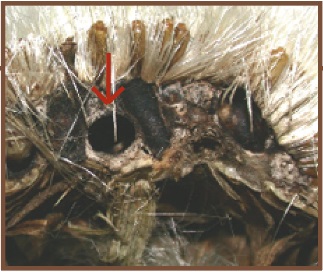 Head weevil pupae and empty pupae chambers can be found in the thistle heads. New
adult weevils have moved into the ground until spring. If at least half of the thistle
heads in the fields have four to six pupae per head, there will be enough adults to
collect and in the spring.
Head weevil pupae and empty pupae chambers can be found in the thistle heads. New
adult weevils have moved into the ground until spring. If at least half of the thistle
heads in the fields have four to six pupae per head, there will be enough adults to
collect and in the spring.
September
Annual musk thistle begins to emerge. these plants will not flower until the spring.
October
Rosette weevils are laying eggs on the thistle seedlings
November
Musk thistle overwinters as a rosette.
December
Rosette weevils (eggs , larva, adults) and adult head weevils are hibernating until late February.
Table 1 Herbicide recommendations for control of invasive thistles in Oklahoma.
(Recommendations for controlling Thistles)
| Pasture and Range | Rate | Expense Levelb | Fall - rosette | Spring - rosette | |
|---|---|---|---|---|---|
| Pasture and Range | |||||
| 2,4-D Amine | 1 to 2 quarts/acre | $ | M | M | |
| GrazonNext® | 1.2 to 2.1 pints/acre | $$ | B-M-S | B-M-S | |
| Grazon P+D | 2 to 4 pints/acre | $$$ | B-M-S | B-M-S | |
| Weedmaster® | 1.5 to 2 pints/acre | $$ | B-M | B-M | |
| Roadsides | |||||
| Escort® | 1 oz./acre | $$$$ | S | ||
| Transline® | 0.7 to 1.4 pt./acre | $$$$ | M | ||
| Vanquish® | 1 to 2 pt./acre | $$$$ | S |
a 2,4-D, GrazonNext®, Grazon P+D and Weedmaster® are labeled for pastures and rangelands. Escort®, Transline® and Vanquish® are labeled for non-cropland. Grazon P+D is a restricted use pesticide. Read labels for specific information and guidelines prior to using the product.
b Check your dealer for updated prices.
c Control includes killing the actively growing plant and preventing it from producing
seed. Best results are obtained with spring applications, so that fall and spring
emerging seedlings are actively growing at the time of treatment. B = bull thistle,
M = musk thistle and S = Scotch thistle.


